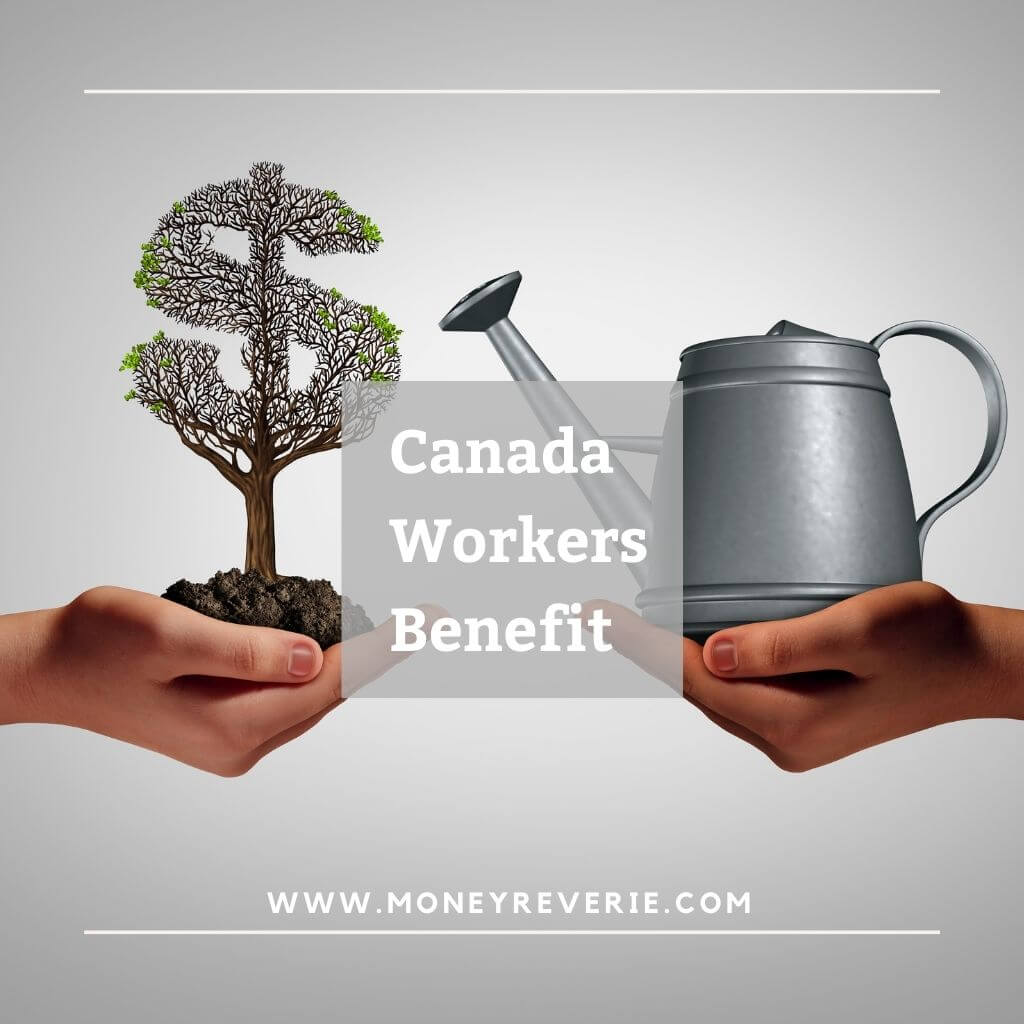The Canada Workers Benefit (CWB) is a federal refundable tax credit aimed at assisting low-income individuals and families to cope with the increasing cost of living. Its primary goal is to reduce poverty and enhance the financial stability of Canadian workers through tax relief.
To qualify for the CWB, you must be a Canadian resident aged 19 or above, with an adjusted net income ranging from $3,000 to $33,015 for individuals, and an adjusted family net income ranging from $3,000 to $43,212 for families.
In this blog post, we’ll provide a comprehensive overview of the Canada Workers Benefit, covering Canada Workers Benefit eligibility requirements, how to apply, benefit amounts you could receive, and the CWB payment dates for 2024.
What is Canada Workers Benefit?
The CWB is a refundable tax credit designed to help low-income working Canadian individuals and families. For the 2007 to 2018 tax year, the Working Income Tax Benefit (WITB) was available for families with a working income of over $3,000.
However, in 2019, the federal government updated the WITB to create the enhanced version, the Canada Workers Benefit, to make it more accessible for Canadians to apply. The CWB was available from 2019 and subsequent years.
In contrast to the WITB, the CWB tax credit offers more benefits and a lower clawback rate. It is also more streamlined.
The CWB has two parts, a basic amount and a disability amount. Low-income families in Canada can get up to $2,461 from the CWB, and low-income individuals can get up to $1,428.
- Basic Amount: Eligible Canadian families and individuals receive the basic amount. However, how much you receive will depend on your adjusted net income, marital status, number of children, etc. The basic amount is gradually reduced when your net income exceeds the CWB threshold and will be completely eliminated for Canadians with higher income.
- Disability Amount: This is an additional supplement for CWB recipients eligible for the disability tax credit. It offered an additional $727 to eligible Canadians in 2023.
Eligible families and individuals can claim their CWB tax credit when they file their income taxes and receive the tax credit as a lump sum.
RELATED: What is Canada PRO Deposit on My Bank Statement? (July 2024)
Canada Workers Benefit Eligibility Requirement
The CWB tax credit is only available to low-income Canadian individuals and families. To be eligible to claim this benefit, you must:
- Have employment income (above $3,000 for some provinces)
- Be 19 years or older.
- Be a Canadian resident for income tax purposes.
- Earn below the maximum income threshold
If you have a spouse or common-law partner, they must meet the following requirements to qualify for the CWB:
- Reside together with you on December 31.
- Meet all the requirements for CWB eligibility.
Furthermore, if you are under 19 years of age, you may still be eligible for the Canada Workers Benefit if you have a spouse or common-law partner or an eligible dependant on December 31st;
An eligible dependant is a person who is:
- your spouse or common-law partner’s child,
- under 19 years of age and lived with you at the end of the year, and
- is not eligible for the CWB for the year it is being claimed.
Canada Workers Benefit Eligibility Income Threshold
In most provinces in Canada, you must meet the minimum employment income requirement of $3,000 to be eligible for the CWB.
However, some provinces have much lower minimum income thresholds. Alberta has $2,760, Quebec has $2,400, and Nunavut has the highest at $6,000.
The minimum income required to receive the disability supplement also varies across Canada. Most provinces have a minimum income threshold for the disability amount of $1,150. However, Alberta has $910, Quebec has $1,200, and Nunavut has $4,800 as their minimum income threshold for the disability supplement.
Who is Not Eligible for the Canada Workers Benefit?
You may not be eligible for the Canada Workers Benefit if:
- You’re a full-time student in any designated school for over 13 weeks. An exception applies when you have a qualified dependent on December 31.
- Canada is not your country/residence, and you’re not required to pay tax in Canada.
- You’re imprisoned within the year for at least 90 days.
- You are a diplomat of another country in Canada who doesn’t pay taxes in Canada.
How Much Is Canada Workers Benefit?
How much you get on Canada Workers Benefit (CWB) lies in your employment income and province/territory of residence.
The maximum basic amount is:
- $1,428 for individuals
The amount starts to reduce when your annual income reaches $23,495. No basic amount is paid when your adjusted annual income exceeds $33,015. - $2,461 for families
The amount starts to reduce when your adjusted annual family income reaches $26,805. No basic amount is paid if your adjusted annual family net income exceeds $43,212.
The maximum basic CWB payment amount will vary for residents of Quebec.
The maximum amount for the disability supplement is:
- $737 for individuals
The Canada Workers Benefit disability supplement begins to reduce when your annual net income is more than $33,018. No disability supplement is paid when your annual net income exceeds $37,932. - $720 for families
The Canada Workers Benefit disability supplement begins to reduce when your annual family net income is more than $43,210. No disability supplement is paid if one spouse is eligible for the disability tax credit and your annual family net income is more than $48,124 or if both spouses are eligible for the disability tax credit. Your annual family net income is more than $53,037.
Generally, to determine how much you will receive as your CWB, the CRA uses your marital status, province/territory of residence, adjusted family income, eligible dependants, earned working income, and eligibility for the Disability Tax Credit.
Canada Workers Benefit Payment Dates 2024
Every year, CWB payments are made quarterly (four times per year). The Canada Workers Benefit payment dates for 2024 are as follows:
- January 12, 2024
- July 12, 2024
- October 12, 2024
If you apply, you can receive half of your CWB amount through advance payments. Also, it is advisable to enrol for direct deposit. This will ensure you receive your payments promptly without disrupting the scheduled CWB payment dates.
If you enrol to receive your payments by mail as a cheque, your cheque may not come on the CWB payment dates. The dates you will receive your payments will depend on the mail service in your area.
If you do not receive your CWB payments on the scheduled dates, wait for ten working days before contacting the Canada Revenue Agency (CRA).
Canada Workers Benefit Application
The CWB is a tax credit and can be claimed when you file your annual tax returns electronically. You can use any of the CRA-certified tax software to claim the tax credit. They provide instructions on how to complete it.
If you file your taxes using a paper return, you can use a Schedule 6, Canada workers benefit. Fill out the form and submit it together with your tax returns.
What is Canada Workers Benefit Advance Payments?
Starting from July 2023, the CWB offers an exciting new initiative. You can receive advance payments equal to 50% of the CWB distributed over three instalments through the Advanced Canada Workers Benefit (ACWB). No need to apply separately if you received the CWB in 2022.
Canada Workers Benefit Advance Payments Application
The CWB advance payment is not automatic. It requires a separate application. You must apply for it each year to get the advance payment.
There are two options for applying for the CWB advance payment. These are:
First Option
- Visit your CRA My Account.
- Navigate to “Canada workers benefit advance payments application.”
- Provide the required information and submit your application.
Second Option
- Complete Form RC201, Canada Workers Benefit Payments Application, and mail it to Sudbury Tax Centre, PO Box 20000, STN A, Sudbury ON P3A 5C1.
Note: You must complete Form RC201 on or before August 31 for it to be processed.
Other Canada Benefits for Low-Income Individuals and Families
The Canadian government has implemented various programs to financially support low-income families through direct payments or targeted tax measures. Here are some of the key benefits available:
1. GST/HST Credit: A tax-free quarterly payment for low-income individuals and families to offset sales taxes on purchases. Eligible Canadians aged 19 and above, with a spouse or children under 19, can apply for up to $467 if single or $612 if married, plus $161 for each child.
Read more about the GST/HST Tax Credit
2. Canada Child Benefits (CCB): A tax-free monthly benefit for low-income families raising children under 18. Canadian citizens or permanent residents primarily responsible for the child’s care can apply through CRA and receive payments within eight weeks of registration.
Read more about the Canada Child Benefit
3. Canada Dental Benefit: Reduces dental costs for eligible low-income families earning less than $90,000 annually. Offers tax-free payments of $260, $390, or $650 for children under 12 without private dental insurance.
Read more about the Canada Dental Benefit
4. Canada Learning Bond for RESPs: Provides additional contributions to RESPs for post-secondary education expenses for low-income families. The government contributes $500 for the first year and $100 annually, up to $2,000 per child.
Read more about the Canada Learning Bond
5. Old Age Security (OAS): Monthly payment for Canadians aged 65 or older with low income residing in Canada for at least ten years after turning 18. Some are automatically enrolled, while others may need to apply for a pension. The payment amount depends on income and residency duration.
Read more about the Old Age Security
Final Thoughts on Canada Workers Benefit
The Canada Workers Benefit could be the little boost you need to transform your financial situation. It may not be much, but those few hundred or thousands of dollars could add up to building your financial security.
The best way to do that is to save it in a high-yield saving account like EQ Bank Savings Plus Account or tax-efficient retirement accounts like TFSA or RRSP. Whatever option you choose, ensure you spend your CWB on things that matter.
FAQs on Canada Workers Benefit
When did Canada Workers Benefit start?
The Canada Workers Benefit (CWB) was introduced in the 2019 tax year. It replaced and expanded upon the previous Working Income Tax Benefit (WITB) program.
What is low income for the CWB?
Individuals earning between $3,000 to $32,244 and families earning between $3,000 to $42,197 are considered low income for the CWB.
What is the phone number for CWB?
To get tax information for individuals, including the CWB, you can contact 1-800-959-8281.










Thank you for this info I had no idea about it and I’m sure my son who’s on disability can qualify. Can you tell me if it can be retroactive to 2019 as well? Many thanks